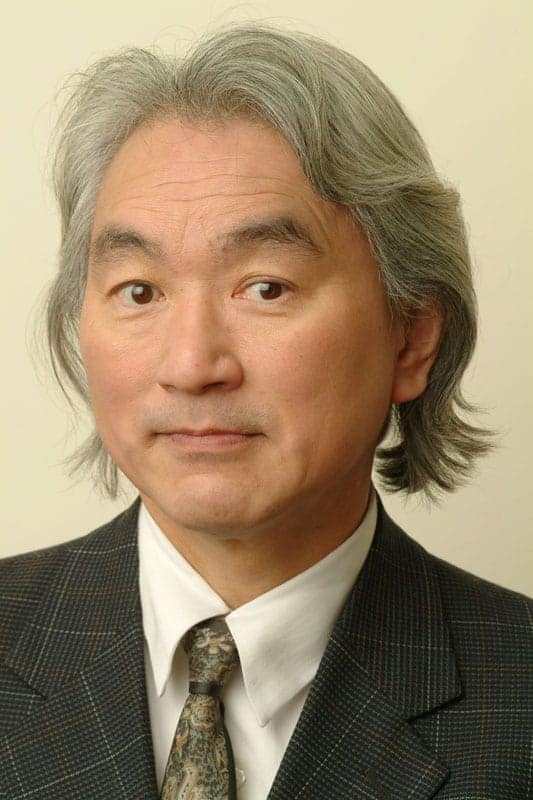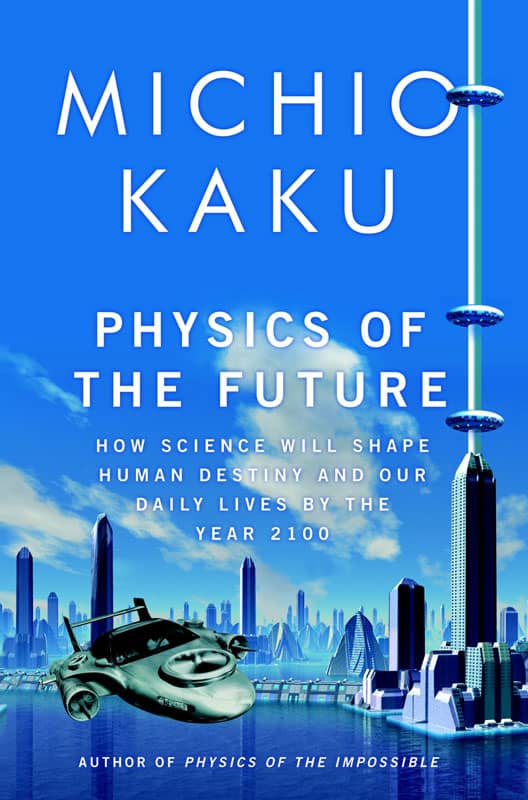As well as being a co-founder of string field theory, Michio Kaku is a best-selling author, television presenter and all-round popularizer of science. His latest book, Physics of the Future: How Science Will Change Daily Life by 2100 is based on interviews with more than 300 scientists at the top of their fields. Aaron Leonard met with Kaku in his office at the City College of New York to find out about his vision of the future – and how he juggles careers in science and the media

What benefits will science bring to the average person in the future?
Today a conventional MRI machine occupies a space about the size of this office, limiting where it can be installed and used. This is because huge coils are needed to make the magnetic field as uniform as possible in order to get those gorgeous pictures of the inside of the body. Using computer technology, which in turn is applied physics, you can now compensate for inhomogeneities of the magnetic field. The world’s smallest MRI machine, made by physicists in Germany, is about one foot tall. Eventually it will be the size of a mobile phone and could be used anywhere.
In the future, chemotherapy will seem as primitive as leeches and bloodletting
We will also benefit from DNA chips that use Silicon Valley technology to locate cancer colonies decades before they form a tumour. The cancer will then be cured using nanotechnology. I had lunch recently with one of the world’s leaders in research in nanoparticles. She’s at the National Institute of Health in Washington and uses molecules like smart bombs to zero in on cancer cells. We are talking about a revolution in cancer research. In the future, chemotherapy will seem as primitive as leeches and bloodletting.
You write that Moore’s Law – the theory that computer speed doubles roughly every two years – is not going to hold much longer for silicon devices, could you explain?
We are seeing the beginning of the end of Moore’s Law for two reasons. One is heat build-up as a result of doing so many electronic operations in a very tiny space. The second is quantum leakage – Heisenberg’s uncertainty principle eventually catches up with chip designers. In tiny circuits the uncertainty principle means that you can’t know exactly where the electron is. And if you shrink a transistor to the size of a few atoms, the atoms themselves can leak out. We physicists are desperately trying to create the post-silicon era: quantum computers, atomic computers, molecular computers.
Given all the technical and financial constraints, what do you see as the future of Big Physics?
In 1993 Big Physics took a huge blow because plans to build the Superconducting Super Collider in the US were cancelled. The Europeans are now benefiting from a much smaller machine, the Large Hadron Collider. Physicists want to go to the next generation beyond that and build the International Linear Collider, but ultimately society as a whole has to make the decision – and unfortunately physicists don’t interact with the larger society.
Science is getting more expensive and the public may simply pull the plug
Science is getting more expensive and the public may simply pull the plug. That’s why we have to interact with the rest of society. That’s one reason why I write books. Even though we physicists created the architecture of the 20th century, the public doesn’t know that. The public only looks in terms of those who massage money. Those who create wealth through things like the transistor or the laser, their names are mostly unknown.
How do you see the interplay of science, politics and society in the future?
Science is a double-edged sword. The positive side can cut against ignorance, poverty and disease. The negative side can be very destructive when wielded by dictatorships, evil monarchies, governments that want to take other people’s resources and subjugate them. Take a look at the two world wars; out of those came poison gas, saturation bombing and nuclear weapons. Scientists create the sword and we are the ones who have to interact with society and explain both sides – that is where I think we have been negligent. Which I think is very sad.
Being a tireless science popularizer must exact demands. How does it affect your research work?
I am a theoretical physicist. If I was an experimental physicist and my vacuum pump broke I would have to drop everything and fly back to New York to repair it. My laboratory is my own mind and I have chunks of equations in my head. If they don’t fit properly into the right form, I have to massage them, manipulate them, take them apart and put them back together again.
My laboratory is my own mind
Travelling does not interfere so much with this process – I can work while I stare out of an aeroplane window or a hotel window. An analogy would be a musician. A musician has partial melodies dancing in their head. When the melodies start to come together they go to a piano and plunk out a few notes, then they go back to daydreaming about melodies. Most of what a musician does is not with a piano at all.
Are you optimistic about the future?
I think we are headed for a type I civilization, a planetary civilization where humans can do things like control the weather and harness all the light from the sun. Type II is a stellar civilization that can control the power of an entire star. Type III is a galactic civilization that controls the output of a 100 billion stars, plays with black holes and zips around the galaxy.
Today we are type 0 and get our energy from dead plants, oil and coal. When I open the newspaper I see the birth pangs of type I. For example, the Internet is the beginning of a type I telephone system. We are privileged to be alive to witness the birth of a type I technology – a truly intelligent planetary communications system. Overall I’m pretty optimistic. I think we’ll get to type I. The danger point is between type 0 and type I; that’s when you have the power to destroy all life on your planet.
• Physics of the Future will be published in the US on 15 March by Doubleday.




